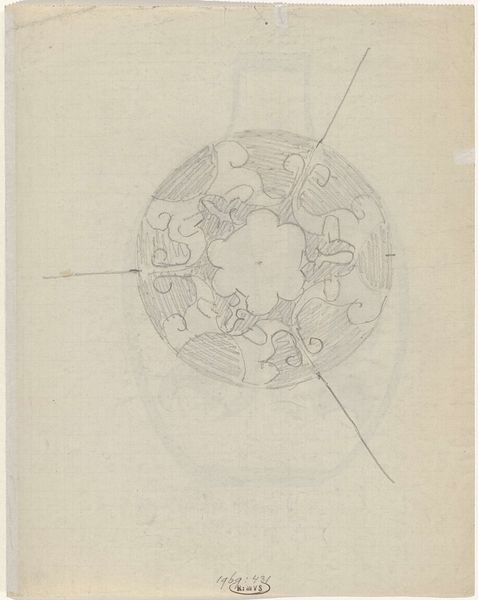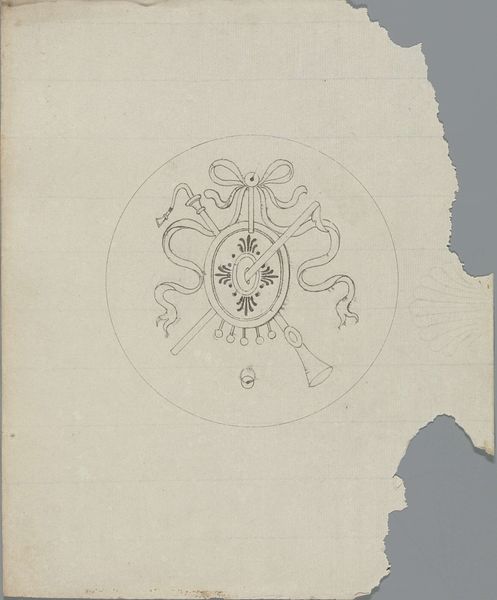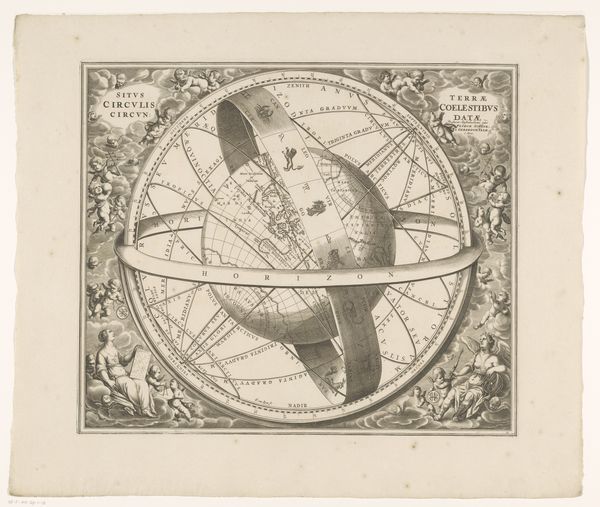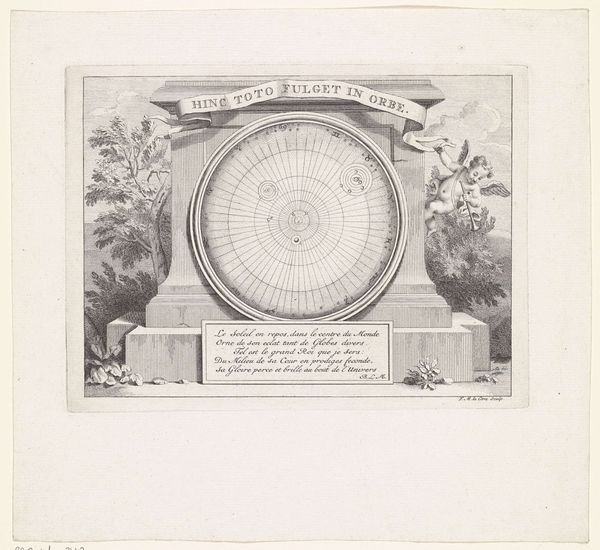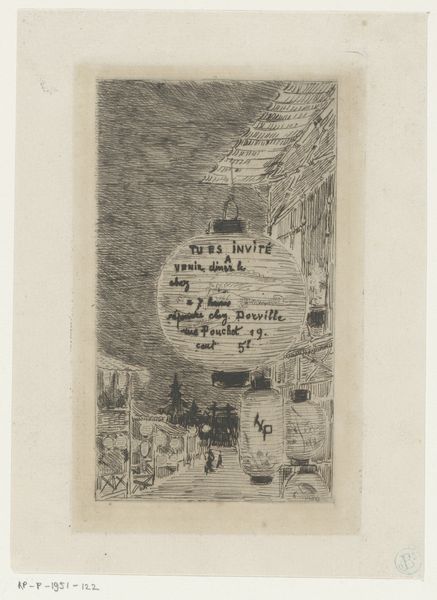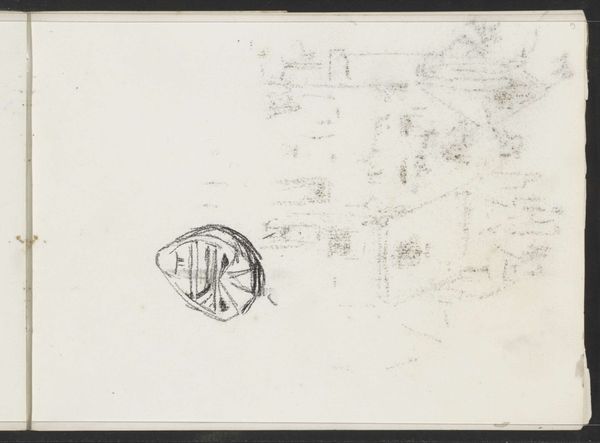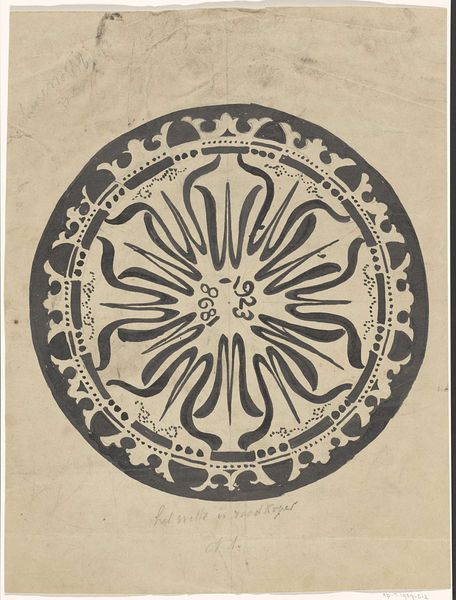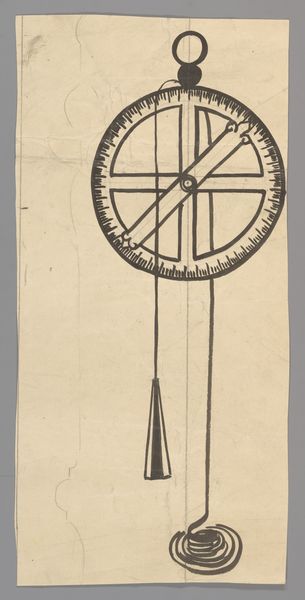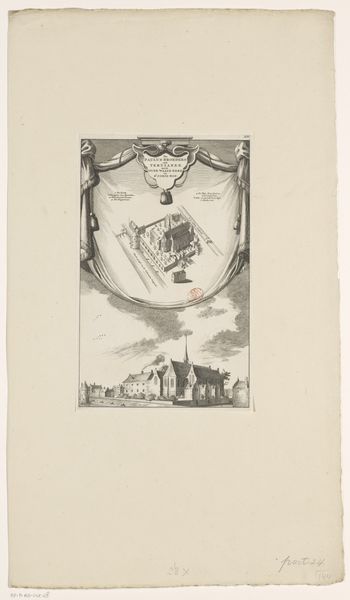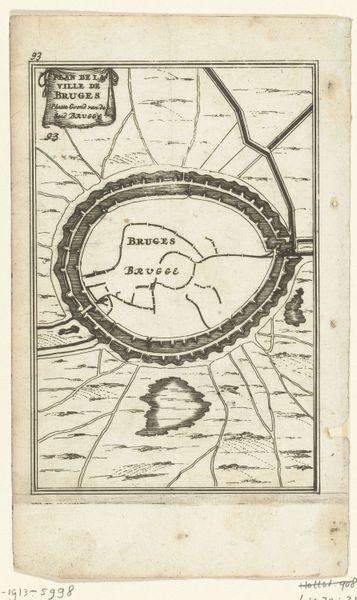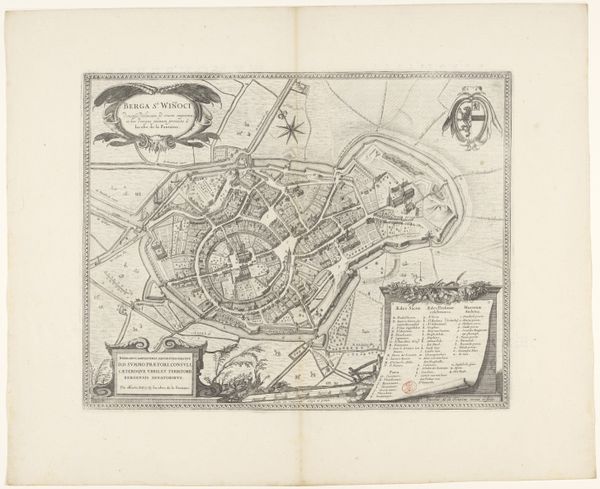
drawing, print, etching, paper, ink, engraving, architecture
#
drawing
# print
#
etching
#
etching
#
paper
#
ink
#
engraving
#
architecture
Dimensions: sheet: 14 5/16 x 9 11/16 in. (36.4 x 24.6 cm)
Copyright: Public Domain
Curator: Here we have a rendering of the "Ceiling Vault of Palazzo Mattei, Rome," created around the 1750s by Sir William Chambers. It's a drawing, an etching really, showcasing architectural design with ink on paper. Editor: It's quite striking. The meticulous details draw the eye, but there's also a sterile, almost diagrammatic quality to it that keeps me at arm's length emotionally. Curator: Indeed. As a product of its time, this drawing reflects the burgeoning interest in rationalizing architectural design. Chambers’s vision wasn’t solely about aesthetics; it also communicated power dynamics of the aristocratic Mattei family through the imposing scale and classical motifs of the ceiling design. Editor: How do these architectural renderings function in a society that, while commissioning these extravagant structures, also struggled with vast social inequalities? There's such tension in viewing this drawing as a symbol of exclusive wealth and privilege contrasted with a growing demand for social reform. Curator: Precisely. The Palazzo Mattei, for instance, served as a stage for enacting and reinforcing hierarchical social roles. Understanding these historical structures of inequality, whether embodied in architecture or perpetuated through its representation, helps us critically examine the uneven distribution of resources that persists even today. The etching isn’t simply an innocent artwork; it’s a visual record of existing power structures. Editor: Absolutely. Looking at it that way helps unlock the image's latent content. On closer viewing I also see how, even in its careful rendering, this is more than cold documentation. Curator: These ceilings also participated in the theater of Baroque Rome; the way light filters, or would filter, through the architecture constructs space as spectacle. Editor: So seeing it, not just as blueprint, but part of a complex political theater, really allows us to expand how we read its intent and social role. Thanks for that reframing. Curator: It's my pleasure, thinking through architecture's positionality in historical contexts always sparks insightful perspectives.
Comments
No comments
Be the first to comment and join the conversation on the ultimate creative platform.
